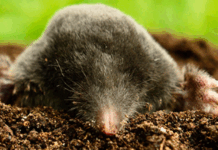Christmas cactus (Schlumbergera bridgesii) and Thanksgiving cactus (Schlumbergera
truncata) look exotic but are rather easy to maintain under the right growing conditions.
While in bloom, water the plants when the soil surface is just becoming dry to the touch.
Never let the plants remain in standing water and well-drained soil is a must.
Holiday cacti bloom in response to the shorter days and cooler nights of winter. If you are gifted a Christmas cactus this season, to prolong the bloom, keep the daytime temperature between 60-65 degrees F and the nighttime temperature between 55-65 degrees F. Keep your cactus in total darkness for at least 12 of every 24 hours. The plant should
receive bright, indirect light the rest of the time. Sudden changes in temperature can cause the cactus to drop its blooms. When transporting it home be mindful of the outdoor
temperature and protect your plant from the cold.
The segments of the holiday cactus that look like leaves are actually stems known as
“phylloclades”. When blooming is done, you can prune the cactus between these
segments. Each cut phylloclade remaining on the parent plant will produce one to two
new stem segments. This will encourage branching and a fuller plant. The cuttings
removed from the plant can be established into new plants. Dip the cut-end of the stem
into water and then rooting hormone, which can be purchased at garden centers or
online. Secure this end into potting mix and keep it moist and in a warm location with
bright light. Once roots develop you can transplant it into a cactus/succulent media.
Poinsettia Care
Modern poinsettia varieties hold onto their beauty for a long time with proper care. Place
your poinsettia in an area with bright light, but don’t let it touch cold window panes. The
day temperature should be 65 to 75 degrees F with 60 to 65 degrees F at night.
Temperatures above 75 degrees will shorten bloom life and below 60 degrees may cause root rot.
Move plants away from drafty windows at night. Poinsettias do not tolerate saturate soil so avoid overwatering. On the other hand, if the plant is allowed to wilt, it will begin to drop leaves. To maintain proper moisture, examine the potting soil daily by sticking your
finger about one-half inch deep into the soil. If it is dry to this depth, the plant needs water. Place the plant in the sink and add lukewarm water to the soil surface until
water runs out of the drainage hole. When the pot finishes draining it can be placed in a saucer or back in the foil wrap.




